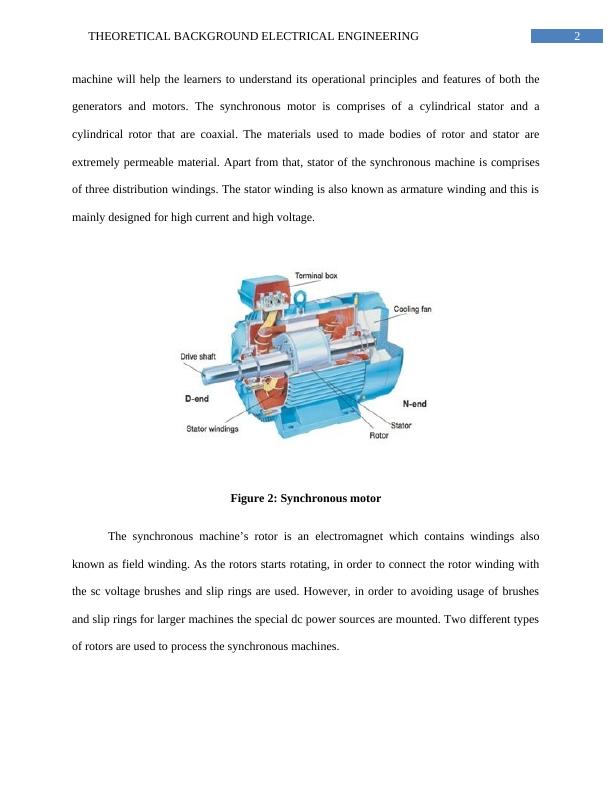Theoretical Background Electrical Engineering
Understanding the operation principle and characteristics of synchronous generator and synchronous motor, constructional features of synchronous machine, equivalent circuit model, performance characteristics of synchronous machine, power and torque characteristics
9 Pages1452 Words51 Views
Added on 2023-01-18
About This Document
This document provides an overview of the theoretical background of electrical engineering, focusing on synchronous machines, their working principles, parallel operation, and AC transmission lines. It explains the concepts and features of synchronous machines as both generators and motors, and discusses the working principle of synchronous generators. Additionally, it covers the parallel operation of synchronous generators and the basics of AC transmission lines.
Theoretical Background Electrical Engineering
Understanding the operation principle and characteristics of synchronous generator and synchronous motor, constructional features of synchronous machine, equivalent circuit model, performance characteristics of synchronous machine, power and torque characteristics
Added on 2023-01-18
ShareRelated Documents
End of preview
Want to access all the pages? Upload your documents or become a member.
Synchronous Machines - Types, Operation, Phasor Diagram, Torque and Power
|3
|535
|313
Types and Construction of Generators
|7
|718
|109
Classifications of DC Motors
|15
|1933
|121
DC Motor Depth Study-Report
|10
|2241
|446
ELEC431 Software Engineering and Programming Assignment
|14
|1176
|234
DC and AC Motor Construction and Working Principle
|11
|1409
|332



